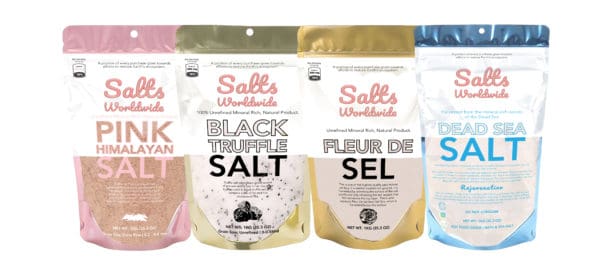
Although perfectly functional for its culinary purpose – making your food salty – pink Himalayan salt is not known for its culinary quality. However, its meteoric rise from a mere also-ran in the food world to a modern lifestyle totem is a testament to its popularity. The pink Himalayan salt is not only salty, but it also has health and media buzz surrounding it. This article examines the facts behind pink Himalayan salt and its rise in the media.
Natural
There are several great reasons to purchase Himalayan pink sea salt, but not all of them are kosher. The brand we’ll review is McCormick Himalayan pink salt, which is certified kosher and approved by the Soil Association of the UK. It has 84 trace elements and minerals. It tastes amazing on meats, vegetables, and casseroles, and is packaged in a United States GMP-certified facility. In addition to tasting great, it’s also cheaper than other brands.
While sodium is essential for life, excess sodium can adversely affect your health. For this reason, people who are on a low-sodium diet should limit their salt intake. Even healthy individuals should monitor their sodium intake, as an estimated 89 percent of American adults consume more sodium than recommended. The good news is that pink Himalayan salt may contain a small amount of iodine, but not enough to be a significant health benefit.
The mineral content of various pink salts was assessed using descriptive statistics. To determine whether differences between the various varieties of pink salt are associated with their mineral content, one-way analyses of variance were conducted. Moreover, two-sample t-tests were used to determine differences in mineral content by region and color intensity. The statistical analysis was carried out using Minitab 17 and SAS University Edition. The significance of the data was determined by p-values less than 0.05.
Unrefined
You’ve probably heard about Himalayan pink salt and wondered what it is and how it can benefit you. It has the beautiful pink and red hues, a high iron content, and 84 essential minerals. Whether you use it on your food or in a bath, Himalayan salt has many benefits that go beyond its aesthetic value. This salt can help restore your body’s pH balance, and it can ease skin ailments like eczema and lung congestion.
Buying an unrefined Himalayan pink salt is not difficult. It’s easy to use and stores in a standard bowl. Unlike other table salt, this salt doesn’t require a special container. All you need is a bowl on your table or counter and you’re good to go. And once you have it, you can simply keep it in your cupboard or pantry. This will last you a whole month and will be a great investment.
The mineral content of all unrefined salts is similar. However, you should consider the source of your salt. If you’re buying an unrefined Himalayan pink salt for cooking, look for one that is mined directly from the source. You can also buy one that’s been evaporated from the sea. It won’t be as coarse as table salt, but its unique flavor will enhance your cooking.
Kosher
There are many varieties of Kosher salts. Some people like pink salt over others. Other people use sea salt for cooking, marinating, and curing meats. There are differences between kosher salt and sea salt, but the two kinds are very similar in taste. Sea salt is the result of evaporated water in the ocean. This type of salt has larger crystals and has no additives.
Kosher salts worldwide sell three types of Himalayan pink salt. Pink salt is the most common variety and contains the highest level of antioxidants. Purple salt contains a higher concentration of minerals and is less likely to have a strong taste, while black salt has no discernible taste. Both are excellent for cooking and for adding to food. Fine Himalayan salt can be used for finishing salts.
Himalayan pink salt is highly sought after by gourmet chefs and kosher consumers alike. Its vibrant hue makes it look more appealing than other types of salt and does not leave a bitter aftertaste. Apart from cooking, it is also used to season meats, and is available in decorative lamps and candle holders. Some of the other uses of Himalayan salt include curing meats and curing meat. Because it contains 84 trace minerals, it is highly beneficial to use this salt for culinary purposes.
Although Himalayan pink salt contains less sodium than other varieties of gourmet salts, they do differ slightly in their color. The bigger the crystals are, the lower the bulk density of the salt. Thus, the less sodium is present. Hence, the color of table salt is less than that of Himalayan salt. If you are unsure about which one is best for you, consult a doctor before buying.
Natural alternative to table salt
A healthier alternative to table salt is pink Himalayan sea salt. This salt is rich in minerals and is free from additives. It enhances athletic performance by maintaining the electrolyte balance of the body and helping muscles contract. However, this salt does not contain iodine. Therefore, you should choose foods that contain iodine if you want to avoid a deficiency. This salt comes in a coarse grade.
Other alternatives include Himalayan mineral salt. This salt is also known as pink salt, but there is no scientific research to back up its claims. The downside of pink salt is its price, and it is not recommended to take before a workout. While pink salt contains some of the same minerals as table salt, it’s not as cheap as the latter. And, unless you are a professional bodybuilder, you’re probably not going to want to use it as a pre-workout.
The highest amount of sodium in table salt is 97 percent sodium chloride. However, this chemical is harmful to your body when you eat too much of it. Excessive consumption of table salt increases your risk for heart disease, stroke, and kidney disorders. It also weakens the bones. To combat the negative effects of table salt, you can substitute it with healthier options. But if you’re unsure of whether to switch to table salt or not, consider the benefits of other alternatives.
Health benefits
Whether you prefer a delicate salt with a slight tang or a crunchy variety, Himalayan pink salt has numerous benefits to your health. It contains iodine, which is essential for proper thyroid function and cell metabolism. Common table salt is often laden with iodine. By consuming the pink salt in moderation, you can reap the benefits of this mineral. Here are 8 more health benefits of Himalayan pink salt.
Salt is important for many essential body functions, but a high intake of salt can lead to blood pressure issues, which can worsen the condition. Fortunately, pink Himalayan salt contains 82% less sodium than typical table salt, and this can significantly help maintain a healthy blood pressure. As long as you eat a small amount of salt every day, you can reap its many benefits without having to worry about negative side effects.
Besides providing relief from colds, flu, and sinus infections, Himalayan pink salt also helps regulate pH levels and keep the body hydrated and energized. The negatively charged ions of the pink salt pull toxins from cells and promote healthy blood circulation. They also aid digestion, improve blood sugar and hormone levels, and even treat respiratory ailments. Lastly, pink salt may help your skin retain moisture. Its 84 minerals also provide relief from cellulite.
Cost
If you’re looking to add a little luxury to your cooking, consider purchasing Himalayan pink salt. This salt comes from deposits that are up to 1500 degrees Celsius. This makes it very hard and stable. Because it’s so rare and expensive, you can’t find it readily in your local store. In addition to its taste, it’s beneficial for the immune system and improves the production of hemoglobin, which is a vital nutrient for your cells. A side benefit of Himalayan pink salt is that it’s also good for the skin.
Another benefit of this salt is its price. It’s typically more expensive than table salt, costing anywhere from five to eight dollars per 100 grams. The price difference is primarily due to marketing, not the actual product. A gram of pink Himalayan salt can be anywhere from $5 to $8. However, the price is worth it for the health benefits it provides. A teaspoon of this salt contains as much as 84 trace elements and minerals, which make it beneficial for preventing and relieving muscle cramps.
It is also sold in various forms and can vary in color, texture, and melting point. It can be bought in blocks, cubes, or powder, and is available in many sizes. Different sizes and textures have different melting points, so you’ll have to determine the size and shape you need. Once you decide the size, you can choose to buy it in a variety of colors. It can also be sold in different shapes, such as crystals.



